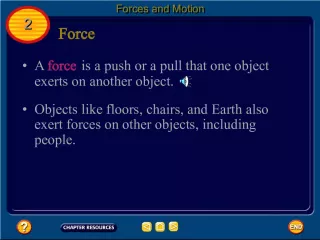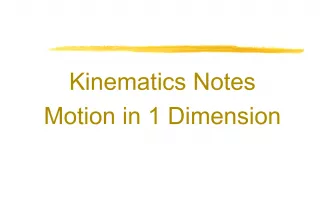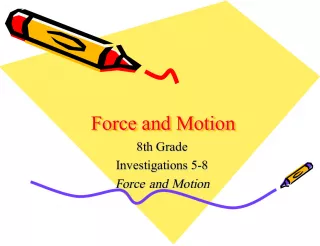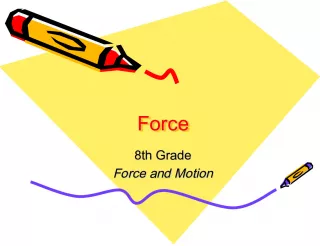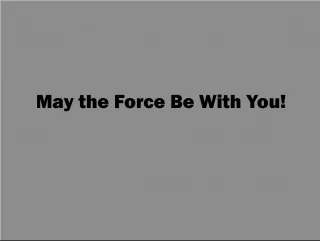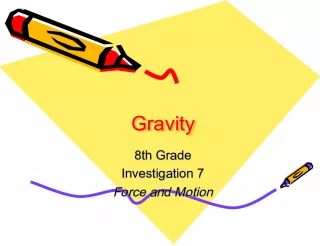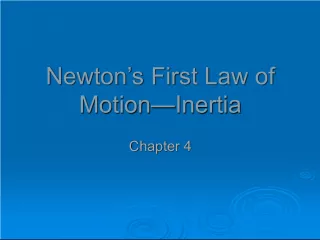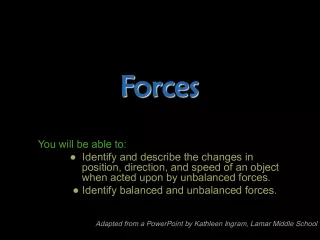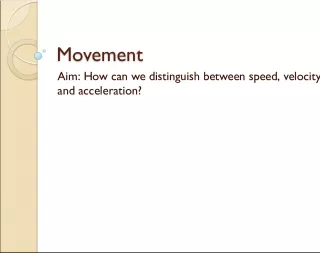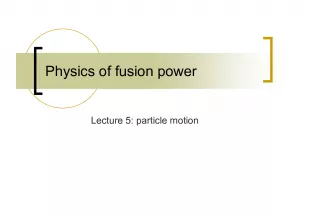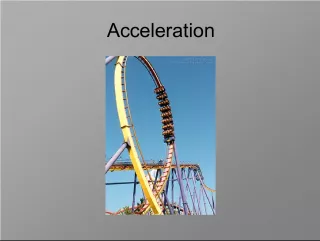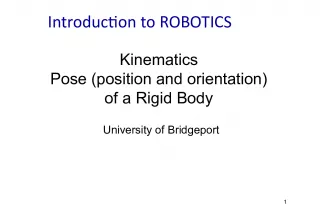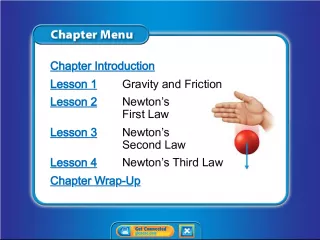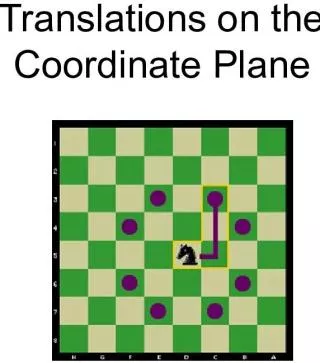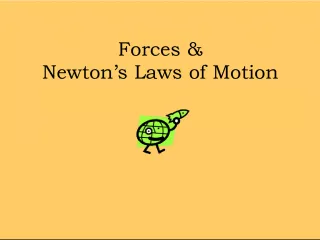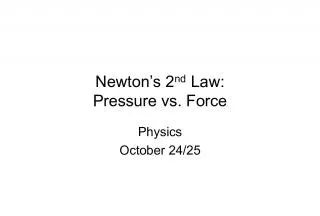Force and Motion: Understanding the Changes in Position, Direction, and Speed


This lesson focuses on identifying and describing how unbalanced forces affect the position, direction, and speed of an object. Topics covered include the definition of force, its effect on motion, and examples of force in action. Students will take notes on these concepts in their dedicated pages.
- Uploaded on | 0 Views
-
 lorelai
lorelai
About Force and Motion: Understanding the Changes in Position, Direction, and Speed
PowerPoint presentation about 'Force and Motion: Understanding the Changes in Position, Direction, and Speed'. This presentation describes the topic on This lesson focuses on identifying and describing how unbalanced forces affect the position, direction, and speed of an object. Topics covered include the definition of force, its effect on motion, and examples of force in action. Students will take notes on these concepts in their dedicated pages.. The key topics included in this slideshow are force, motion, unbalanced forces, position, direction, speed,. Download this presentation absolutely free.
Presentation Transcript
1. Unit 2.1 Force and Motion Learning Goal (TEKS): Identify and describe the changes in position, direction, and speed of an object when acted upon by unbalanced forces. Translation: We are going to learn about how the forces on Earth create and cause the motion of objects. You have pages for taking these notes. In each section, write down the definition. Examples have been provided.
2. What is a Force? Definition: A force is a push or pull that causes an object to move, stop, or change direction In physics, a force is anything that makes an object accelerate
3. Balanced and Unbalanced Forces Forces occur in pairs and they can be either balanced or unbalanced.
4. Balanced and Unbalanced Forces Picture A: The forces are __________. Picture B: The forces are _____________. PICTURE A PICTURE B balanced unbalanced
5. Balanced Forces Balanced forces are equal forces acting on an object in opposite directions (the object is still) Balanced forces do not cause change in motion They are equal in size and opposite in direction I need 2 volunteers!!
6. Examples of Balanced Forces
7. Unbalanced Forces Unbalanced forces are unequal forces acting on an object which cause it to move
8. Unbalanced Forces An unbalanced force always causes a change in motion Also, when unbalanced forces act in opposite directions you can find the net force
9. Net Force Net force is the overall force acting on an object. It is a combination of the magnitude (difference between 2 forces) and the direction (direction of the largest force). 4 N, Left -10 N, right = 6 N, right =
10. Examples of Unbalanced Forces Gravity is a constant force. The parachute is working against the force of gravity. The persons finger is pushes the toy truck. The truck moves in the direction of the greatest force occurring on it. Some force is acting against the finger, but that isnt strong enough to resist.
11. More Examples of Unbalanced Forces The soccer ball doesnt move until the girl provides an unbalanced force upon it. The tug of war doesnt have the same amount of people on each side - the forces are unequal. One side will move more than the other.
12. Gravity as a Force Lets look at a demonstration of gravity at work: Whats this? rubber band What are these?
13. Gravity as a Force Explanation: the rubber band stretches as the weight pulls on it. The weight is being pulled down by the force of gravity. The spring scale measures in NEWTONS the amount of force acting on the rubber band. Newtons (N) the metric unit used to measure force
14. Gravity as a Force The rubber band in turn exerts an upward force on the weight. What happens when more weight is added? The additional weight adds or INCREASES the amount of force acting on the rubber band. As this force increases, the length of the rubber band increases. Weight is a downward force caused by the force of gravity pulling objects to the center of the Earth.
15. Newtons? Sir Isaac Newton? Yes! The unit for measuring force is NEWTON(S). It is named for that famous scientist!
16. Spring Scale Definition: a spring scale is a tool used to measure force. It works in the same way the rubber band does. The spring inside stretches based on the amount of force being exerted.
17. Reading Pictures of Unbalanced Forces 3 N, right 6 N, left = 3N, left Number means magnitude, and the direction of the force is left 1. In pictures about force, there will be a graphic demonstrating the force. 2. Then there are arrows showing the direction and magnitude or strength, of the forces. 3. The formula shows even more detail.
18. Unbalanced Forces Pictures 4 N, left 10 N, right = 6N, right What is going on in this picture?
19. Unbalanced Forces Pictures 5 N, right + 10 N, right = 15N, right What if the two forces acting on an object are going the same direction? Then what do we do? Draw in your notes how the arrows for this picture might look. Were you correct? If not, fix it now!
20. Are these Balanced or Unbalanced Forces?
21. Force Balanced Force Unbalanced Force Net Force Newton Spring Scale
22. Force Examples : Balanced Force Examples: Unbalanced Force Examples: Net Force Example: Newto n (N) Examples: Spring Scale Example: 4 N, left 10 N, right = 6N, right
23. Force A push or pull on an object Examples : pushing a shopping cart or pulling a wagon Balanced Force Equal forces acting on an object in opposite directions. (Object is still) Examples: Unbalanced Force Unequal forces acting on an object which causes it to move Examples: Net Force a combination of the magnitude (difference between 2 forces) and direction (direction of largest force) Example: Newto n (N) The metric unit of measuring force Examples: Spring Scale A device that measures the tension force acting on an object Example: 4 N, left 10 N, right = 6N, right
